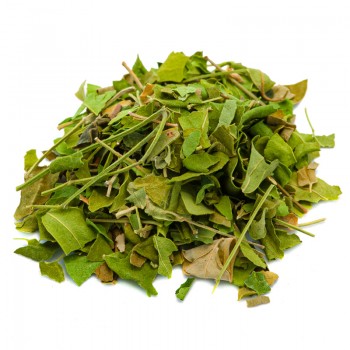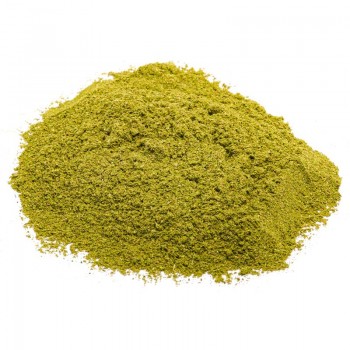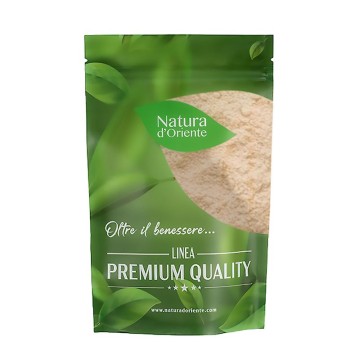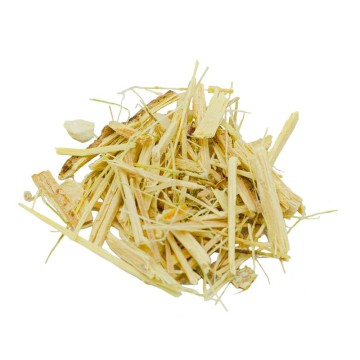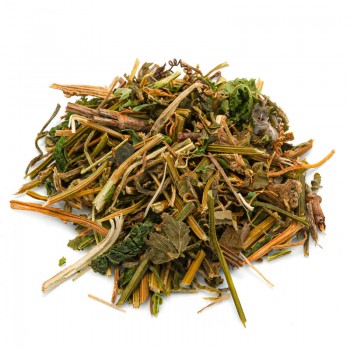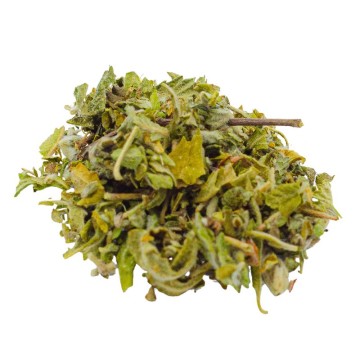To face the demands of everyday life, an herbal tea offers a moment of refreshment and pleasure. This blend has a varied aromatic profile, with bitter and herbaceous notes balanced by balsamic, citrus, and spicy nuances.
Its flavor is dominated by the vegetal notes of damiana, which are enhanced by the similar notes of savory and harmonize with those of muira puama. This Amazonian plant has a slightly earthy and woody flavor, which pairs with damiana for a deep and persistent base. For a balanced flavor, other aromatic herbs are blended: the sweet touch of lemon balm, the floral delicacy of helichrysum and verbena, and the aromatic notes of hyssop.
It's a blend that engages the senses with a touch of vitality, perfect for a moment of respite before expending renewed energy throughout the day.
The herbal tea mix contains herbs traditionally used not only for their sensory properties but also for their potential contribution to overall well-being. One of the best-known plants is damiana, whose leaves have historically been used as a tonic infusion for physical and mental fatigue. Muira puama (or marapuama) also serves the same purpose, with its roots, trunk, and bark traditionally used.
Additional ingredients include savory, parsley, helichrysum, and hyssop, plants prized since ancient times for their digestive benefits. In the herbal tea blend, verbena, along with lemon balm, promotes relaxation.
Please note: The information provided is based on herbal tradition and the common use of plants. It is not intended to replace medical advice nor does it constitute therapeutic prescriptions.
Plants and Flowers
The herbal blend contains various medicinal plants and herbs that have been used in different regions of the world since ancient times. For example, muiri puama, a South American plant widespread in Brazil, and damiana, native to the Americas (Central America, Mexico, Texas, and the Caribbean). Several other medicinal herbs have been present in our country for centuries, particularly helichrysum.
Damiana, with the botanical name Turnera diffusa, is a small shrub that grows mainly in dry, sunny areas. It has historically been used by various Central American populations. It reaches about 2 meters in height and produces yellow flowers.
Ptychopetalum olacoides (or uncinatum) is used in Brazil and surrounding areas to make herbal teas, extracts, or plant compounds from the roots, bark, and trunk. Known as Muira Puama or Marapuama, the shrub is small.
Savory (Satureja montana) is an annual medicinal plant that can reach a height of 30–50 cm with a slender stem. The most important species are Savory (Satureja hortensis) and Mountain Savory (Satureja montana), from which the essential oil is extracted.
The perennial hyssop plant is Hyssopus officinalis, of the Lamiaceae family. Known for its herbalism and culinary uses, it grows up to 2 meters tall with a slender stem and highly fragrant purple-blue flowers. Melissa officinalis is a perennial herbaceous plant in the mint family, Lamiaceae. It grows to about 60 centimeters tall, producing white or pale yellow flowers and highly aromatic leaves. It prefers full sun and is easily grown in dry soil.
The perennial helichrysum plant is Helichrysum italicum, of the Asteraceae (Compositae) family. It occurs in many varieties as a wild shrub. It grows to about 50 cm tall and prefers dry soil. It is very common in Italy, as well as in the Mediterranean areas of France and Yugoslavia. The biennial parsley plant, Petroselinum crispum, is grown as a culinary herb. It grows in clumps of foliage about 30 cm tall, with dark green triangular leaves used in recipes. It is a slow-growing plant and reaches maturity 70-90 days after planting.
How to prepare herbal tea with the damiana herbal blend
The infusion is obtained by placing about 3-5 grams of the herbal blend in a cup (250 ml) of water at 100°C.
Leave to steep for 8 to 10 minutes before drinking. Add honey or sugar, according to preference.
Herbal Blend: Side Effects and Contraindications
The ingredients that make up the herbal tea are considered safe when taken in the recommended doses. It is essential to maintain consumption within the recommended doses, as excessive consumption could cause adverse effects in sensitive individuals (gastric disorders, headache, nervousness, insomnia, or agitation). It is advisable to check for any allergies to the ingredients contained in the blend. The herbal tea is not recommended for pregnant or breastfeeding women..

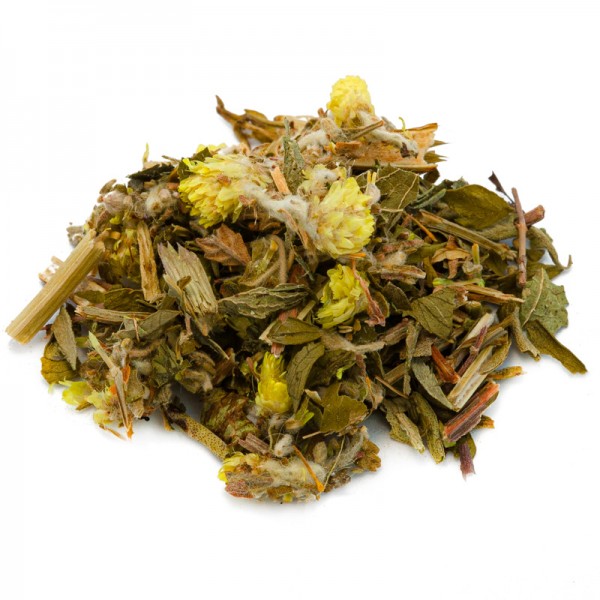







 No reward points for this product.
No reward points for this product.
